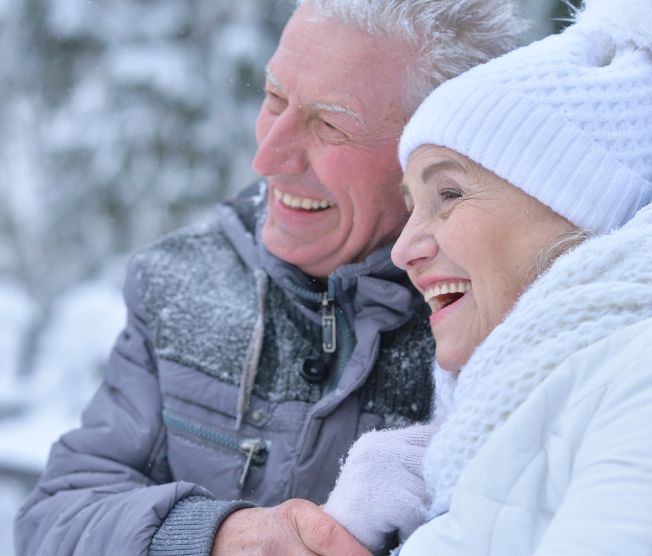 Extreme cold weather affects everyone but for older adults with declining muscle mass, freezing temperatures can make it hard to retain body heat and increase hypothermia risks.
Extreme cold weather affects everyone but for older adults with declining muscle mass, freezing temperatures can make it hard to retain body heat and increase hypothermia risks.
There are other perils of winter weather to contend with, including slippery surfaces that can increase slip and fall risks. Here’s what you should know.
Hypothermia Risks
When your body temperature drops below 95 degrees Fahrenheit, hypothermia can occur. The body begins to lose heat at a faster rate, cannot generate heat as efficiently and begins to overextend its energy reserves. This scenario can affect your cognitive skills, as well as your heart, kidney and liver health.
Older adults also have hypothermia risks in temperatures as high as 40 degrees and may not be aware of the body losing heat at a faster rate than it can produce. Risks increase further if you’re sweating or wearing damp, wet clothing.
In addition to these concerns, hypothyroidism, diabetes, Parkinson’s disease and other age-related conditions can affect your body’s ability to maintain a consistent temperature.
Reducing Hypothermia Risks In Cold Weather
During winter, ensure your home has sufficient heat and dress in warm layers when you head outdoors:
- Keep your home’s internal temperature between 65 and 70 degrees with a thermostat, rather than a space heater or fireplace, which come with fire risks.
- Seal cracks that could cause the indoor temperature to decrease. You can use weatherstripping and have the frames surrounding your windows and doors sealed.
- Even at home, dress in layers from head to toe. Remain warmly dressed as you sleep.
- Diet can also play a role in how well your body regulates heat. Eat more food this time of year, increase hydration and limit – if not eliminate – alcohol consumption.
- Have a plan for power outages, including a backup generator or place to seek shelter.
- Discuss with your doctor if any medications may affect how well you stay warm.
- Ask family and friends to check on you, especially during snow and ice storms.
- When going outdoors, wear multiple loose layers of clothing to trap body heat, a hat and scarf, shoes with traction, and waterproof garments to stay fully dry.
- Limit your time outdoors to lessen exposure risks.
In addition to these tips, it’s important to know the signs of hypothermia:
- Cold feet and hands
- Pale skin
- Shivering
- Slower or slurred speech
- A puffy face
- Sleepiness or lethargy
- Acting angry or aggressive
- Slow or jerky movements
- A slow heartbeat
- Shallow breathing
- Blacking out
If you or a loved one experiences these symptoms in cold weather, call 911.
Other Risks of Extreme Cold Weather
When temperatures drop and snow and ice accumulate, be aware of:
- Fall Risks: Have someone clear your walkways and stairs. Check that your shoes and mobility device provide enough traction to keep you stable before going outdoors.
- Frostbite: Heart disease and other circulation issues can increase the risk for frostbite, which has the potential to move from the extremities down to the bone and lead to limb loss. Put on layers and if your skin feels hard or looks waxy, yellow or gray, seek medical attention immediately.
- Shoveling Snow: Unless your doctor gives you the go-ahead, avoid this activity. For older adults, the weight of snow and intensive labor can place strain on your heart and bones, increasing heart attack and fracture risks.
To learn more about winter safety for older adults, contact the medical team at West Hartford Health & Rehabilitation Center today.
« Burn Injury Risks for Older Adults

